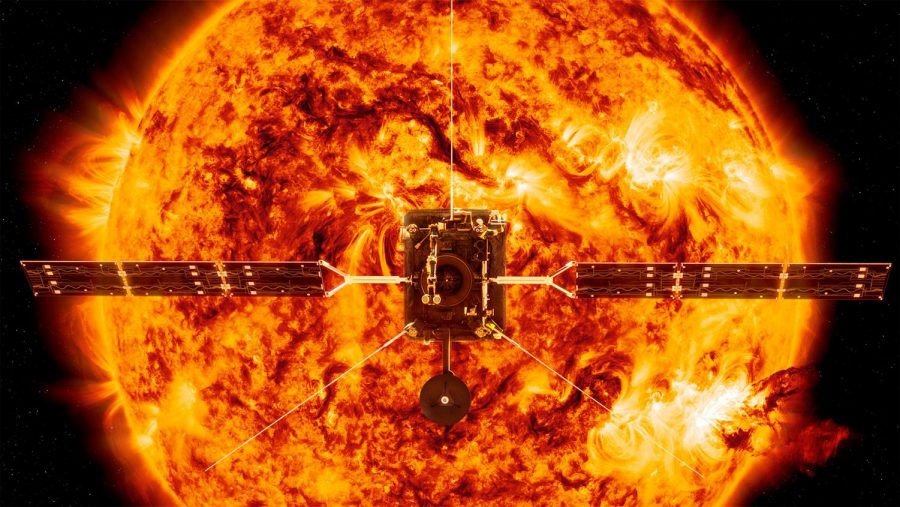The Mission to get a Close, Unprecedented Picture of Our Sun
NASAʻs depiction of the Solar Orbiter in front of the sun
A mission to get pictures of the north and south poles of the sun launched on Sunday, Feb. 9th at 11:03 PM Eastern Time. The mission is a collaboration between NASA and the European Space Agency.
It will take two years to reach its elliptical orbit around the sun but it will provide information about the sun and its magnetic field. The spacecraft called The Solar Orbiter launched from Cape Canaveral in Brevard County, Florida. The Solar Orbiter has ten instruments to capture pictures of the sun’s atmosphere, the solar disk, and the poles. How the intense radiation and energetic particles affect our planet and solar system.
The Solar Orbiter will aid in predicting solar winds and stormy space “weather”. These storms have big effects on the earth. Solar storms can knock out power grids, disrupt telecommunications, disrupt air traffic, and endanger astronauts.
Tim Horbury of Imperial College London, Principal Investigator for the Magnetometer instrument (MAG) says “The data we received shows how the magnetic field decreases from the vicinity of the spacecraft to where the instruments are actually deployed,” but what does that mean? Horbury goes onto explain that this information confirms that the boom deployed, but it also confirms that the instruments will provide accurate measurements in the future.
Yannis Zouganelis, an ESA’s deputy project scientist for the Solar Orbiter mission, said, “by the end of April, we will have a better idea of the performance of the instruments and hopefully start collecting the first scientific data in mid-May.”

EMAIL: [email protected]
Hey there! I’m Holly Ikeda. I am from Glendale, California. This year I am a senior and this is my third year on the Kā Mōʻī staff and my first year as Chief Editor. I am a part of the National Honors Society and a few other clubs here on campus. I love to write a variety of story types but I have found that I like writing feature stories. I get to meet and understand a bunch of different people while bringing them into the spotlight. For my future, I plan on going to UCLA for nursing and eventually work my way up to getting a Ph.D. in psychology. My main goals this year are to revive the paper and leave a solid foundation for next year's staff to continue the legacy. Don't be afraid to reach out to me with questions or other concerns. (808)271-9170


